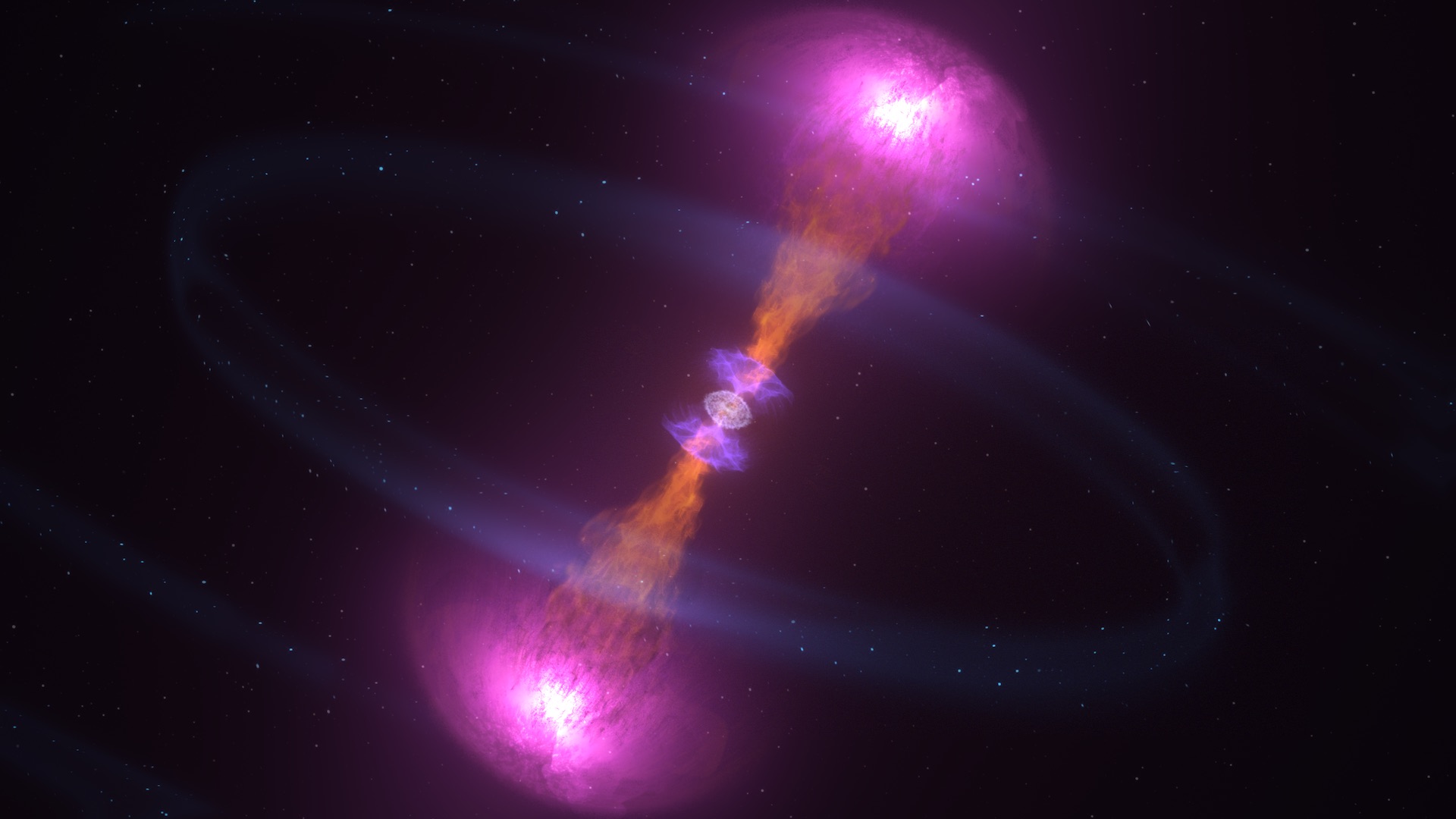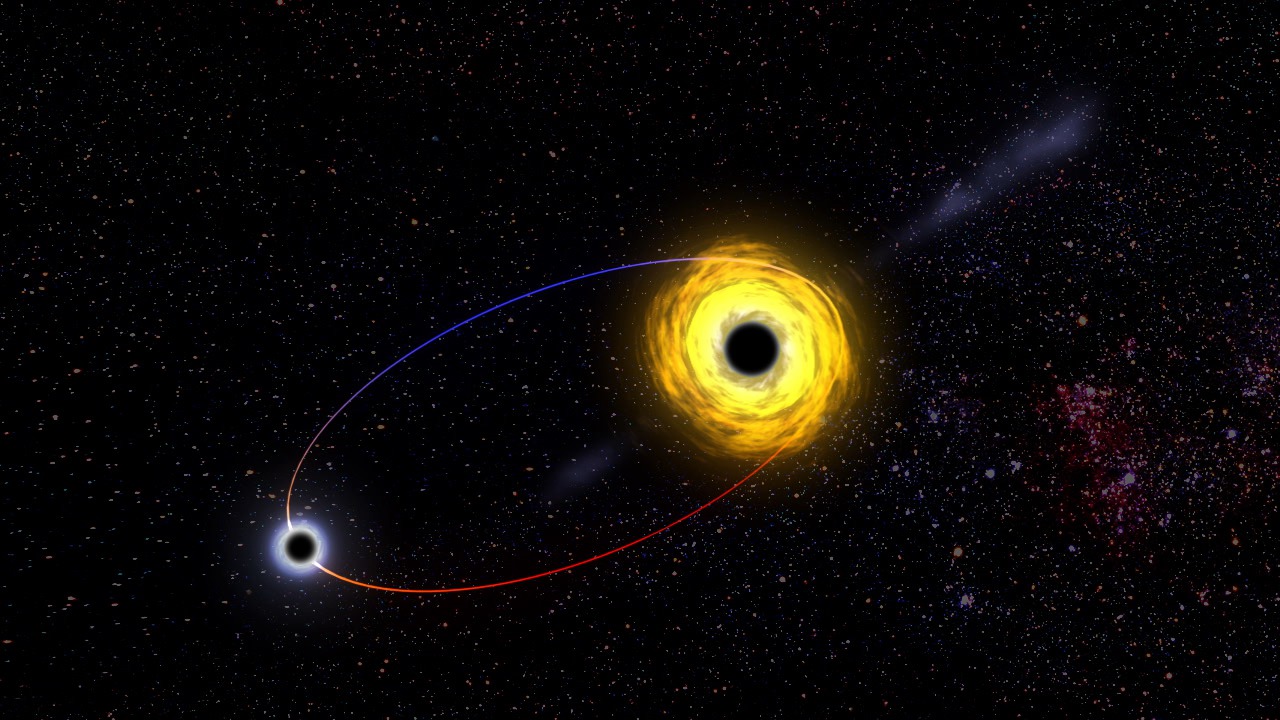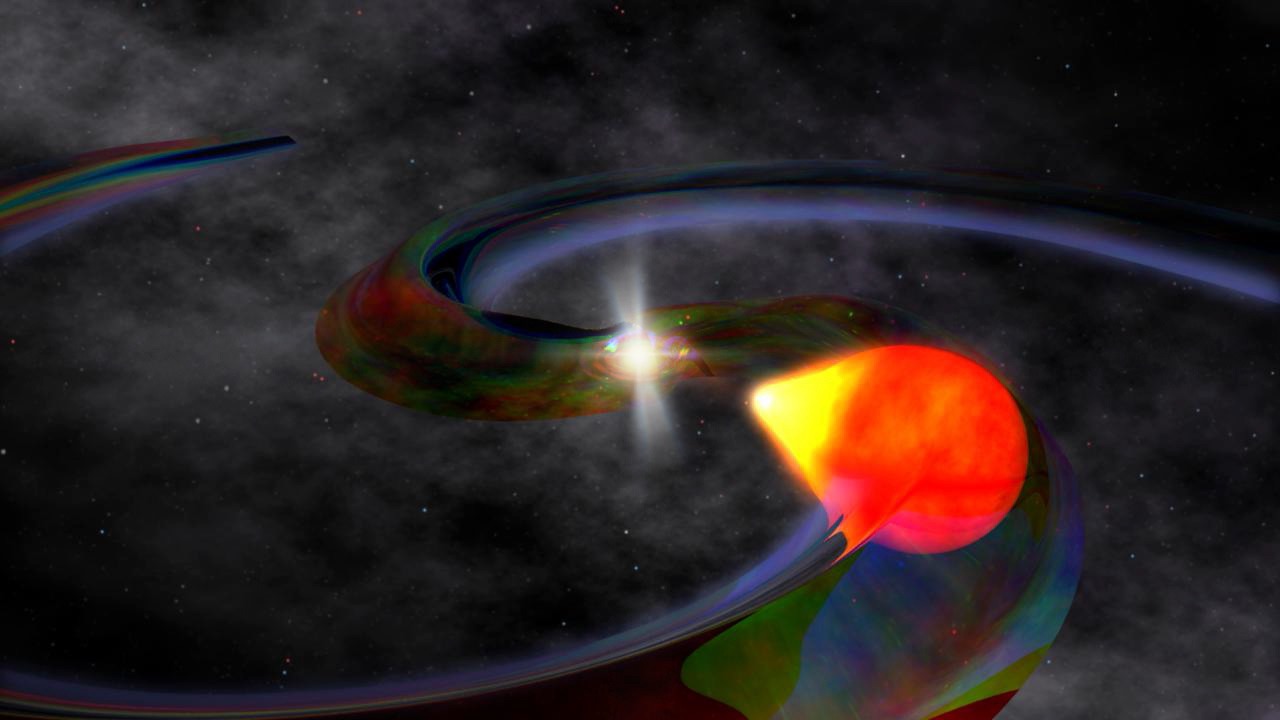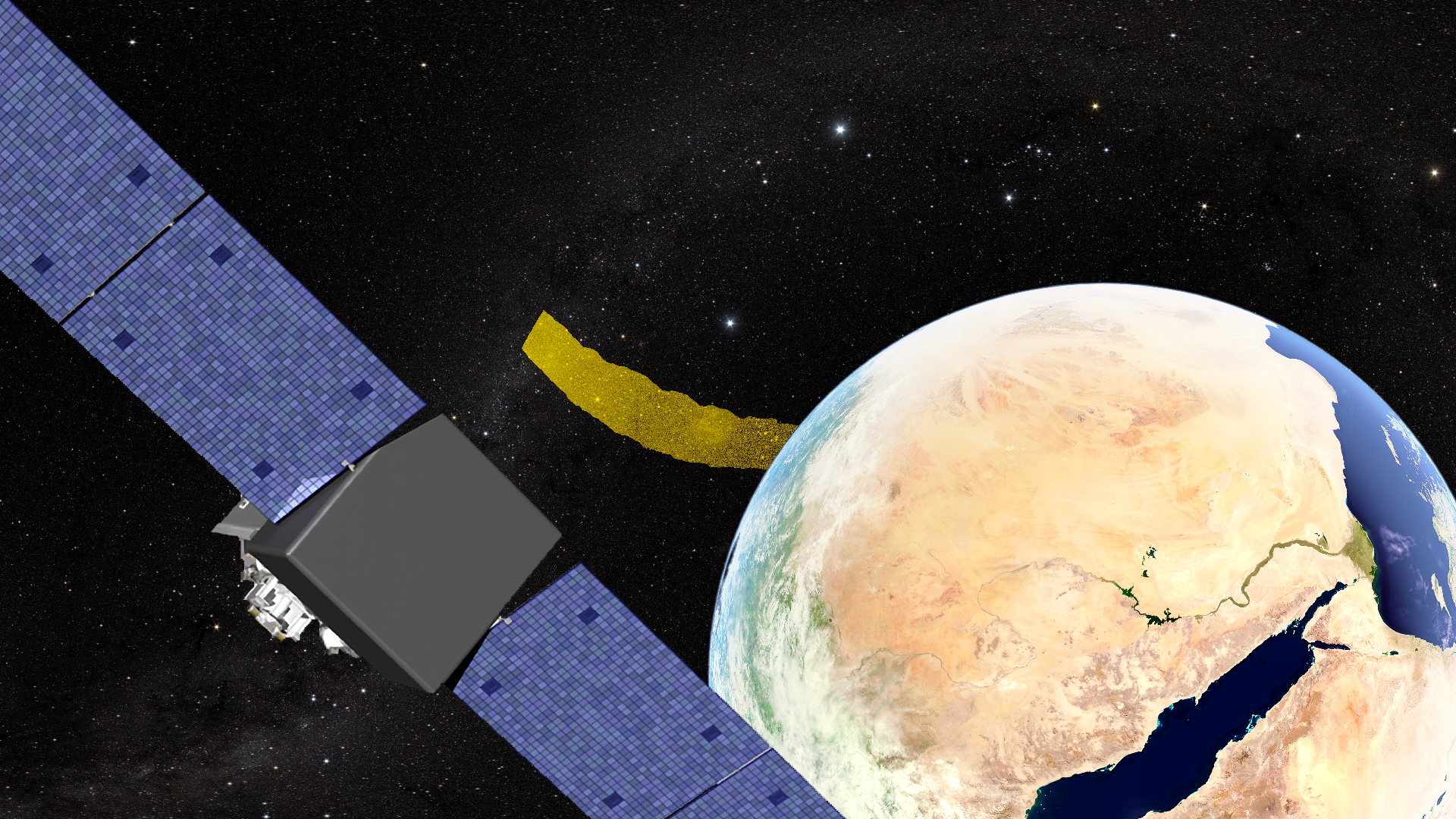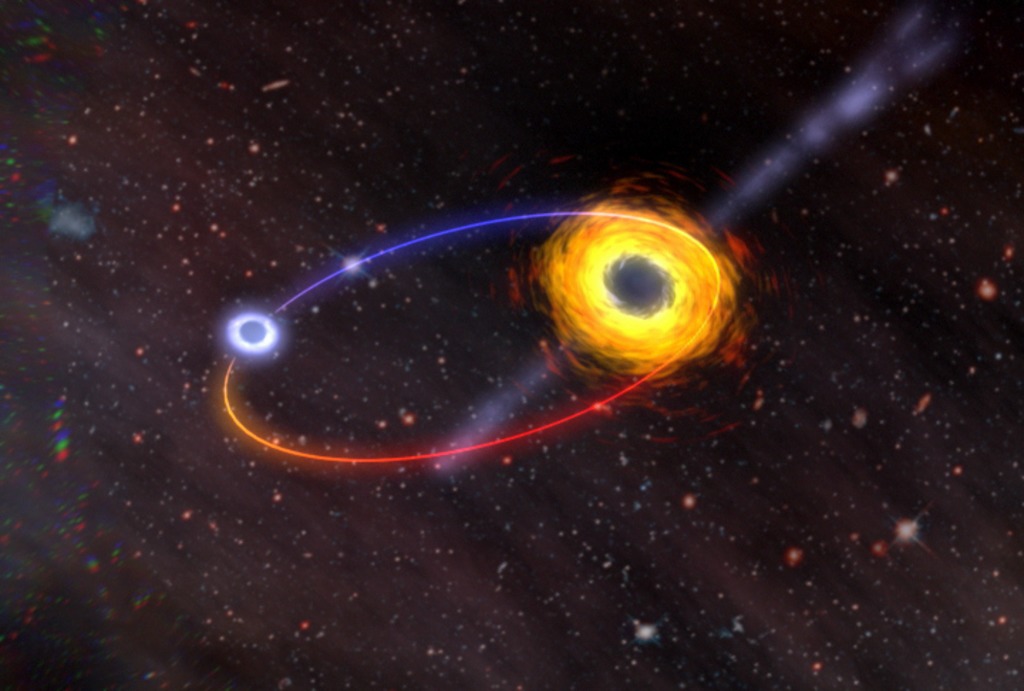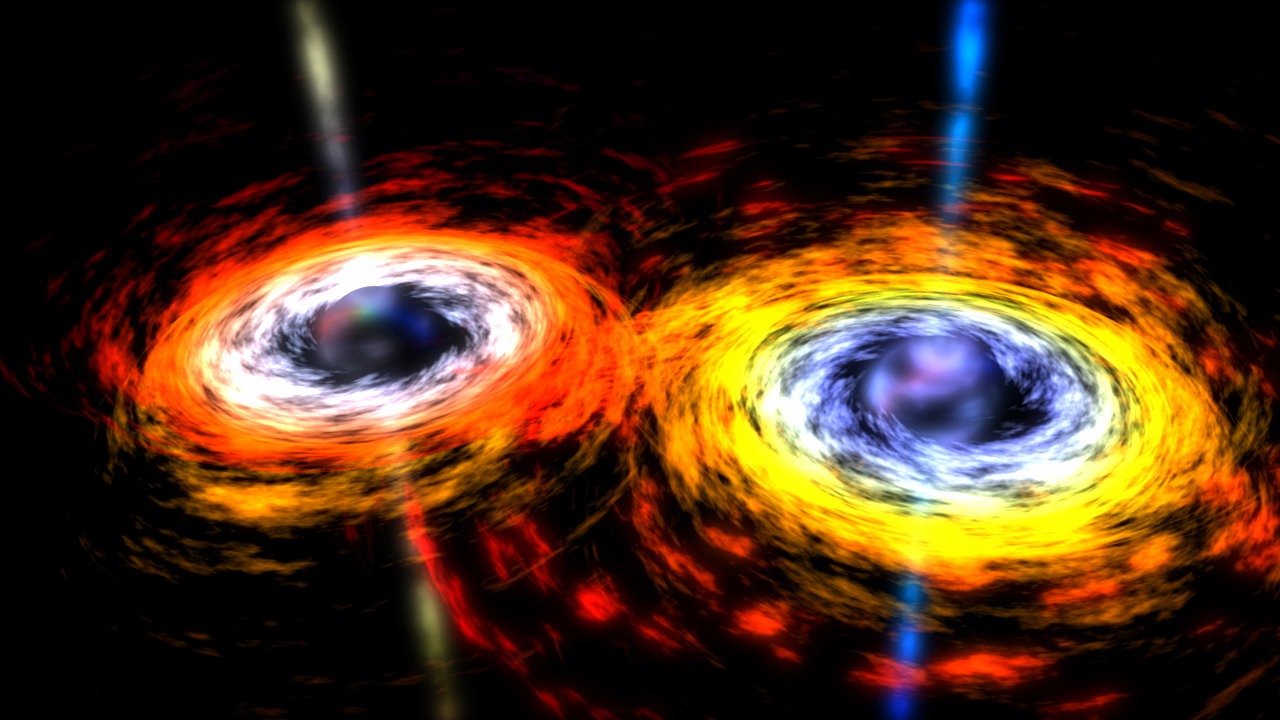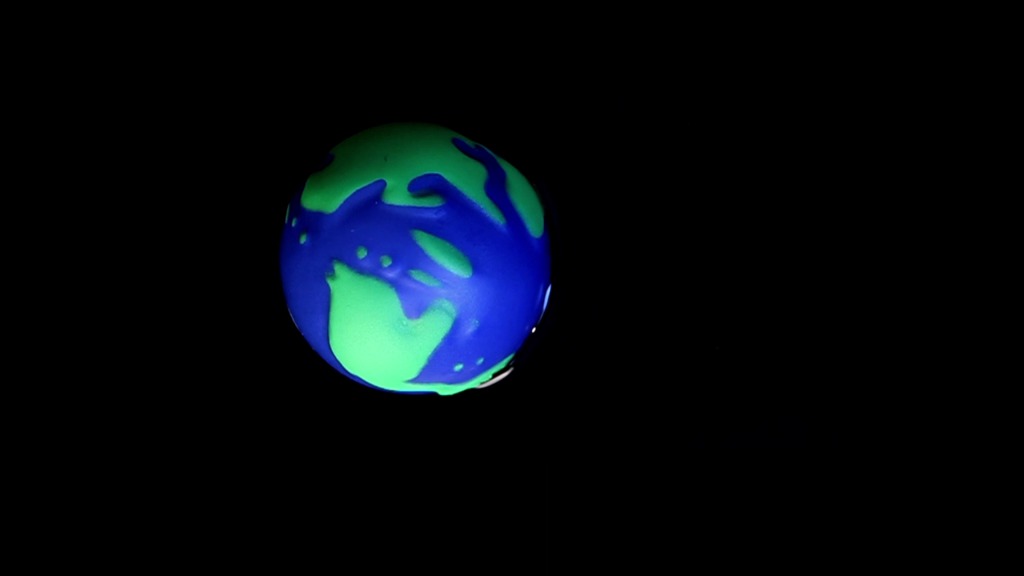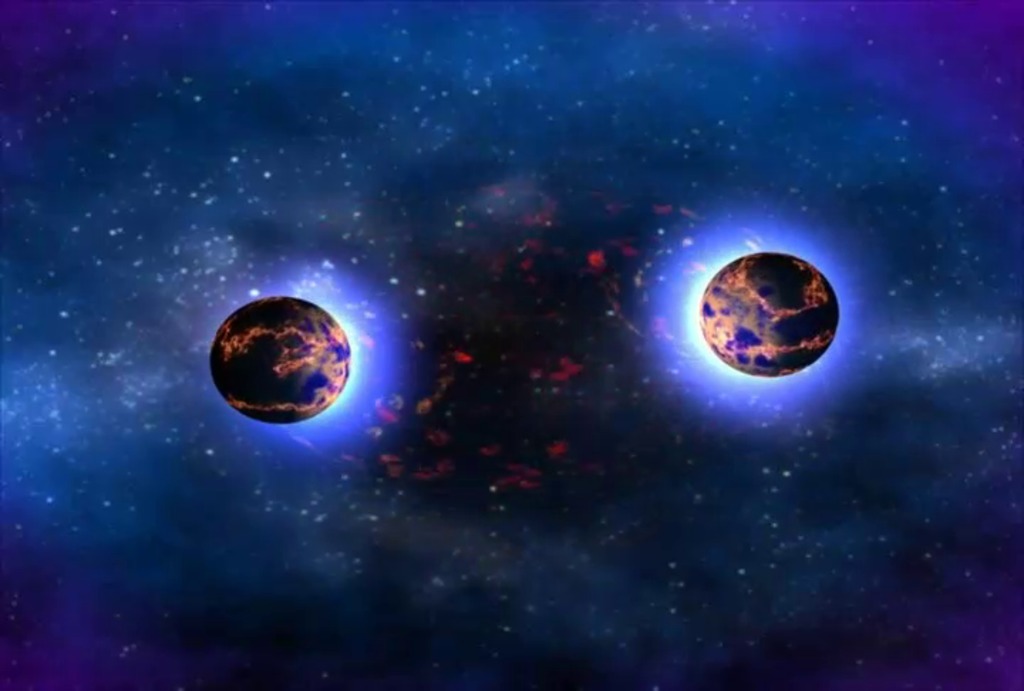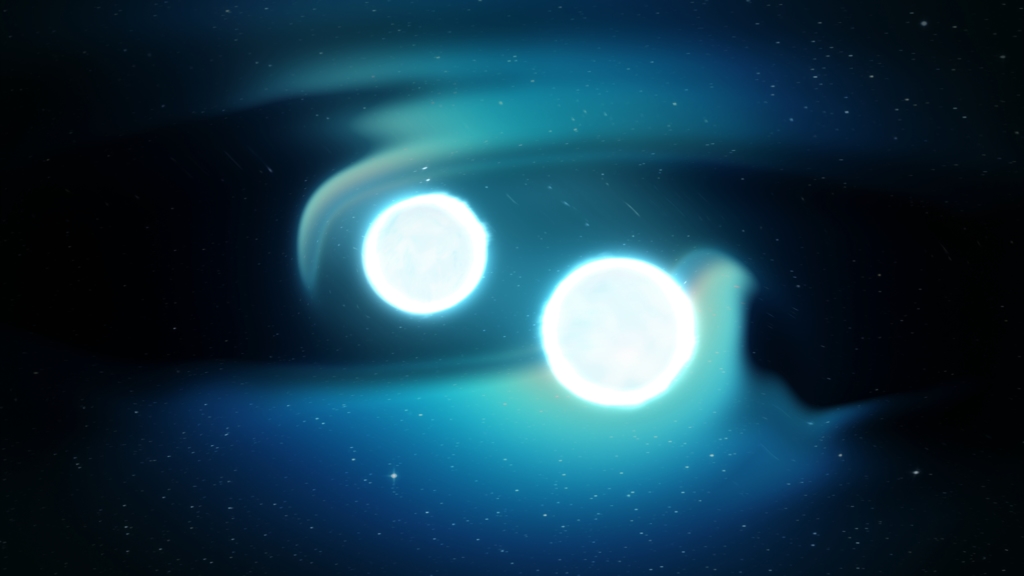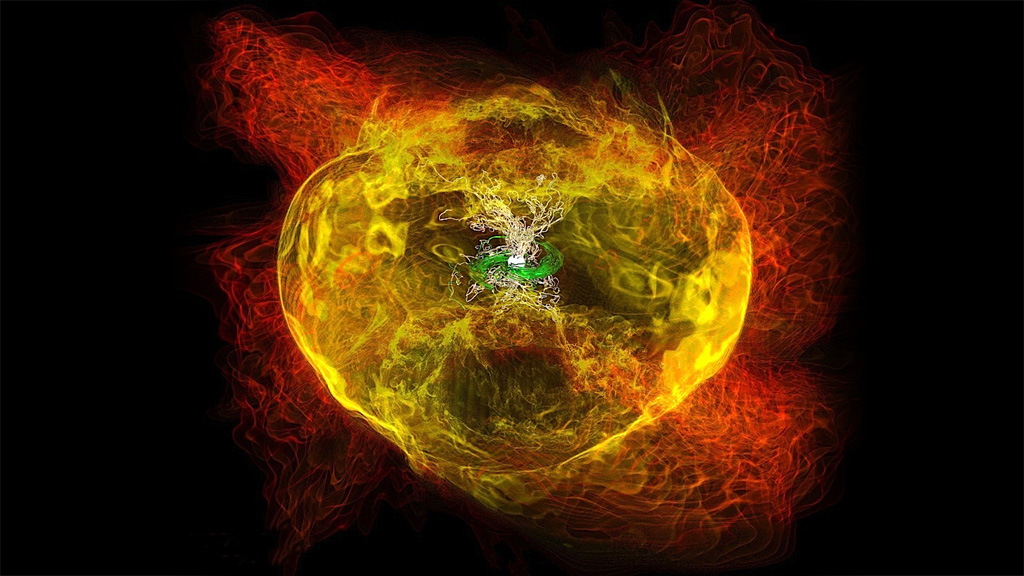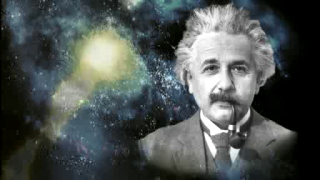General Relativity
Overview
This is a collection of media resources available on the Scientific Visualization Studio website relating to Einstein's general theory of relativity.
More information and media can be found at:
NASA's Blueshift Blog
100 Years of General Relativity
How Scientists Captured the First Image of a Black Hole
For students and teachers:
NASA's Space PLace - Einstein
NASA's Cosmic Times - the universe
NASA's Cosmic Times - pulsar gravitational waves
NASA's Physics and Engineering Collection
Gravity's Grin
News and missions:
Three Ways to Travel at (Nearly) the Speed of Light
Gravity Probe B
LISA - Laser Interferometer Space Antenna
Scientist further confirms Einstein’s theory through new solar research
LIGO Has Detected Gravitational Waves
Simulation Sheds Light on Spiraling Supermassive Black Holes
Results of Epic Space-Time Experiment
Listening for Gravitational Waves Using Pulsars
Black Hole Image Makes History
Tracking the Motion of Mercury
Gravitational Lensing & Microlensing
First Gamma-ray Measurement of a Gravitational Lens
Go to this pageAstronomers using NASA's Fermi observatory have made the first gamma-ray measurements of a gravitational lens, a kind of natural telescope formed when a rare cosmic alignment allows the gravity of a massive object to bend and amplify light from a more distant source.The opportunity arose in September 2012, when Fermi's Large Area Telescope (LAT) detected a series of bright gamma-ray flares from a source known as B0218+357, located 4.35 billion light-years away in the constellation Triangulum. These powerful outbursts in a known gravitational lens provided the key to making the measurement. Astronomers classify B0218+357 as a blazar, a type of active galaxy noted for intense outbursts. At the blazar's heart is a supersized black hole with a mass millions to billions of times that of the sun. As matter spirals toward this black hole, some of it blasts outward as jets of particles traveling near the speed of light in opposite directions.Long before light from B0218+357 reaches us, it passes directly through a spiral galaxy – one much like our own – located 4.03 billion light-years away. The galaxy's gravity bends the light into different paths, so astronomers see the background blazar as dual images. But these paths aren't the same length, which means that when one image flares, there's a delay of many days before the other does.While radio and optical telescopes can resolve and monitor the individual blazar images, Fermi's LAT cannot. Instead, the Fermi team exploited the playback delay between the images. In September 2012, when the blazar's flaring activity made it the brightest gamma-ray source outside of our own galaxy, Fermi scientists took advantage of the opportunity by using a week of dedicated LAT time to hunt for delayed flares. Three episodes of flares showing playback delays of 11.46 days were found, with the strongest evidence in a sequence of flares captured during the week-long LAT observations. ||
A Black Hole Visits Baltimore
Go to this pageA visualization of a black hole passing across Baltimore's Inner Harbor || baltimore_lensed-example_frame-1920x1080.png (1920x1080) [2.5 MB] || baltimore_lensed-example_frame-1920x1080.jpg (1920x1080) [509.5 KB] || baltimore_lensed-example_frame-1920x1080_searchweb.png (180x320) [108.6 KB] || baltimore_lensed-example_frame-1920x1080_thm.png (80x40) [6.7 KB] || baltimore_lensed-b-1920x1080.m4v (1920x1080) [23.3 MB] || baltimore_lensed-b-1920x1080.wmv (1920x1080) [24.0 MB] || baltimore_lensed-b-1280x720.m4v (1280x720) [14.2 MB] || baltimore_lensed-b-1920x1080.webm (1920x1080) [23.3 MB] || baltimore_lensed-b-1280x720.wmv (1280x720) [14.7 MB] || baltimore_lensed-b-30688.key [28.4 MB] || baltimore_lensed-b-30688.pptx [25.8 MB] || baltimore_lensed-b-1920x1080p30.mov (1920x1080) [295.7 MB] || a-black-hole-visits-baltimore.hwshow [228 bytes] ||
Gravitational Microlensing Animation
Go to this pageAnimation illustrating how gravitational microlensing works. 4k resolution. || Lensing_00789_print.jpg (1024x576) [60.5 KB] || Lensing_00789.png (3840x2160) [7.1 MB] || Lensing_00789_searchweb.png (320x180) [54.6 KB] || Lensing_00789_thm.png (80x40) [4.4 KB] || WFIRST_Microlensing_H264_1080p.mov (1920x1080) [57.6 MB] || WFIRST_Microlensing_H264_1080p.webm (1920x1080) [3.7 MB] || 3840x2160_16x9_30p (3840x2160) [64.0 KB] || WFIRST_Microlensing_H264_4k.mov (3840x2160) [76.0 MB] || WFIRST_Microlensing.key [60.0 MB] || WFIRST_Microlensing.pptx [59.7 MB] || WFIRST_Microlensing_4k_ProRes.mov (3840x2160) [2.2 GB] ||
Dark Matter Gravitational Lensing Animation
Go to this pageAnimation illustrating light from a cluster of galaxies being lensed by dark matter. || GravLens_fr_00168_print.jpg (1024x576) [59.0 KB] || GravLens_fr_00168.png (3840x2160) [3.1 MB] || GravLens_fr_00168_searchweb.png (320x180) [43.7 KB] || GravLens_fr_00168_thm.png (80x40) [4.4 KB] || GravLens_H2641080p.mov (1920x1080) [27.1 MB] || GravLens_H2641080p.webm (1920x1080) [1.7 MB] || 3840x2160_16x9_30p (3840x2160) [0 Item(s)] || GravLens_H264_4K.mov (3840x2160) [35.4 MB] || GravLens_4k_ProRes.mov (3840x2160) [1.4 GB] ||
NICER Lensing
Go to this pageThe Neutron star Interior Composition Explorer (NICER) mission will study neutron stars, the densest known objects in the cosmos. These neutron star animations and graphics highlight some of their unique characteristics.For more information about NICER visit: nasa.gov/nicer. ||
Microlensing Study: Most Common Outer Planets Likely Neptune-mass
Go to this pageA new statistical study of planets found by the gravitational microlensing technique suggests that Neptune-mass planets may be the most common worlds in the outer reaches of planetary systems. Credit: NASA's Goddard Space Flight CenterMusic: "Hurricanes Wrap My Heart" from Stockmusic.netWatch this video on the NASA Goddard YouTube channel.Complete transcript available. || MOA_II_Still_print.jpg (1024x576) [117.4 KB] || MOA_II_Still.png (3356x1888) [8.3 MB] || 12425_Microlensing_Neptunes_ProRes_1920x1080_2997.mov (1920x1080) [3.3 GB] || 12425_Microlensing_Neptunes_FINAL_youtube_hq.mov (1920x1080) [821.9 MB] || 12425_Microlensing_Neptunes_H264_Good_1080.mov (1920x1080) [369.1 MB] || 12425_Microlensing_Neptunes_FINAL_HD.wmv (1920x1080) [167.7 MB] || 12425_Microlensing_Neptunes_H264_1080.m4v (1920x1080) [246.3 MB] || 12425_Microlensing_Neptunes_FINAL_appletv.m4v (1280x720) [124.2 MB] || 12425_Microlensing_Neptunes_Compatible_540.m4v (960x540) [94.7 MB] || 12425_Microlensing_Neptunes_ProRes_1920x1080_2997.webm (1920x1080) [24.6 MB] || 12425_Microlensing_Neptunes_FINAL_appletv_subtitles.m4v (1280x720) [124.4 MB] || Microlensing_Neptunes_SRT_Captions.en_US.srt [4.5 KB] || Microlensing_Neptunes_SRT_Captions.en_US.vtt [4.5 KB] || 12425_Microlensing_Neptunes_FINAL_ipod_sm.mp4 (320x240) [42.6 MB] ||
Black Holes
New Simulation Sheds Light on Spiraling Supermassive Black Holes
Go to this pageGas glows brightly in this computer simulation of supermassive black holes only 40 orbits from merging. Models like this may eventually help scientists pinpoint real examples of these powerful binary systems. Credit: NASA's Goddard Space Flight Center/Scott Noble; simulation data, d'Ascoli et al. 2018Music: "Games Show Sphere 01" from Killer TracksWatch this video on the NASA Goddard YouTube channel.Complete transcript available. || SMBH_Sim_Still_1.jpg (1920x1080) [333.8 KB] || SMBH_Sim_Still_1_print.jpg (1024x576) [138.8 KB] || SMBH_Sim_Still_1_searchweb.png (320x180) [69.3 KB] || SMBH_Sim_Still_1_thm.png (80x40) [6.4 KB] || 13043_SMBH_Simulation_1080.webm (1920x1080) [17.4 MB] || 13043_SMBH_Simulation_1080.mp4 (1920x1080) [202.8 MB] || SMBH_SRT_Captions.en_US.srt [2.0 KB] || SMBH_SRT_Captions.en_US.vtt [1.9 KB] || 13043_SMBH_Simulation_ProRes_1920x1080_2997.mov (1920x1080) [2.0 GB] ||
Hubble Detects a Rogue Supermassive Black Hole
Go to this pageThe Hubble Space Telescope captured an image of a quasar named 3C 186 that is offset from the center of its galaxy. Astronomers hypothesize that this supermassive black hole was jettisoned from the center of its galaxy by the recoil from gravitational waves produced by the merging of two supermassive black holes. Read the press release here - https://www.nasa.gov/feature/goddard/2017/feature/gravitational-wave-kicks-monster-black-hole-out-of-galactic-coreDownload the Hubble images here - http://hubblesite.org/news_release/news/2017-12Read the science paper here - http://imgsrc.hubblesite.org/hvi/uploads/science_paper/file_attachment/231/3c186.pdf ||
Massive Black Hole Shreds Passing Star (Animation Only)
Go to this pageA star approaching too close to a massive black hole is torn apart by tidal forces, as shown in this artist's rendering. Filaments containing much of the star's mass fall toward the black hole. Eventually these gaseous filaments merge into a smooth, hot disc glowing brightly in X-rays. As the disk forms, it's central region heats up tremendously, which drives a flow of material, called a wind, away from the disk.Credit: NASA's Goddard Space Flight Center/CI LabWatch this video on the NASA Goddard YouTube channel.For complete transcript, click here. || BlackHoleAnimation.1675_print.jpg (1024x576) [119.5 KB] || BlackHoleAnimation.1675_searchweb.png (320x180) [88.0 KB] || BlackHoleAnimation.1675_thm.png (80x40) [5.9 KB] || 20228_Swift_Tidal_ProRes_1920x1080_5994.webm (1920x1080) [4.8 MB] || 1920x1080_16x9_60p (1920x1080) [256.0 KB] || 20228_Swift_Tidal_ProRes_1920x1080_5994.mov (1920x1080) [1.4 GB] || 20228_Swift_Tidal_H264_1920x1080_5994.mov (1920x1080) [813.8 MB] ||
Black Hole Accretion Disc Energies
Go to this pageA black hole is a massive object whose gravitational field is so intense that nothing - not even light (electromagnetic radiation) — can escape from within its so-called event horizon. Accretion disks of hot material encircle many black holes, and this material emits X-rays and other forms of energy. Gas closer to the black hole is hotter and emits more energetic radiation. Gas at the innermost stable orbit tells astronomers whether the black hole is spinning because a rotating black hole can host material in stable orbits much closer to its event horizon. Oppositely directed jets of gas often form in the innermost zone of black hole accretion disks. ||
Gravitational Waves
Doomed Neutron Stars Create Blast of Light and Gravitational Waves
Go to this pageThis animation captures phenomena observed over the course of nine days following the neutron star merger known as GW170817, detected on Aug. 17, 2017. They include gravitational waves (pale arcs), a near-light-speed jet that produced gamma rays (magenta), expanding debris from a kilonova that produced ultraviolet (violet), optical and infrared (blue-white to red) emission, and, once the jet directed toward us expanded into our view from Earth, X-rays (blue). Credit: NASA's Goddard Space Flight Center/CI LabMusic: "Exploding Skies" from Killer TracksWatch this video on the NASA Goddard YouTube channel.Complete transcript available. || Neutron_Star_Merger_Still_2_new_1080.png (1920x1080) [2.5 MB] || Neutron_Star_Merger_Still_2_new_1080.jpg (1920x1080) [167.3 KB] || Neutron_Star_Merger_Still_2_new_print.jpg (1024x576) [50.4 KB] || Neutron_Star_Merger_Still_2_new.png (3840x2160) [7.7 MB] || Neutron_Star_Merger_Still_2_new.jpg (3840x2160) [1.0 MB] || Neutron_Star_Merger_Still_2_new_searchweb.png (320x180) [51.4 KB] || Neutron_Star_Merger_Still_2_new_thm.png (80x40) [4.4 KB] || 12740_NS_Merger_Update_1080.m4v (1920x1080) [50.3 MB] || 12740_NS_Merger_Update_H264_1080.mp4 (1920x1080) [96.9 MB] || 12740_NS_Merger_Update_1080p.mov (1920x1080) [101.9 MB] || NS_Merger_SRT_Captions.en_US.srt [417 bytes] || NS_Merger_SRT_Captions.en_US.vtt [399 bytes] || 12740_NS_Merger_4k_Update.webm (3840x2160) [10.0 MB] || 12740_NS_Merger_4k_Update_H264.mp4 (3840x2160) [254.9 MB] || 12740_NS_Merger_4k_Update_H264.mov (3840x2160) [516.7 MB] || 12740_NS_Merger_4k_Update_ProRes_3840x2160_5994.mov (3840x2160) [5.1 GB] ||
Gravitational Waves from Black Holes
Go to this pageA gravitational wave is a theoretical fluctuation in the curvature of spacetime caused by the movement of incredibly massive objects. In this animation, two massive black holes orbit each other, creating gravitational waves. ||
Millisecond Pulsar with Gravitational Waves
Go to this pageA pulsar is generally believed to be a rapidly rotating neutron star that emits pulses of radiation (such as x-rays and radio waves) at known regular intervals. A millisecond pulsar is one with a rotational period in the range of 1-10 milliseconds. As the pulsar picks up speed through accretion, it distorts due to subtle changes in the crust. Such slight distortion is enough to produce gravitational waves. Material flowing onto the pulsar surface from its companion star tends to quicken the spin, but the loss of energy to gravitational waves tends to slow the spin. This competition between forces may reach an equilibrium, setting a natural speed limit for millisecond pulsars beyond which they cannot spin faster. ||
NASA's Fermi Preps to Narrow Down Gravitational Wave Sources
Go to this pageFermi's GBM saw a fading X-ray flash at nearly the same moment LIGO detected gravitational waves from a black hole merger in 2015. This movie shows how scientists can narrow down the location of the LIGO source on the assumption that the burst is connected to it. In this case, the LIGO search area is reduced by two-thirds. Greater improvements are possible in future detections.Credit: NASA's Goddard Space Flight Center Watch this video on the NASAgovVideo YouTube channel. || LIGO_GBM_Common_only_Earth.png (1920x1080) [4.2 MB] || LIGO_GBM_Common_only_Earth_print.jpg (1024x576) [168.3 KB] || LIGO_GBM_Common_only_Earth_searchweb.png (320x180) [97.0 KB] || LIGO_GBM_Common_only_Earth_web.png (320x180) [97.0 KB] || LIGO_GBM_Common_only_Earth_thm.png (80x40) [6.6 KB] || Fermi_LIGO_GBM_localizations_H264_YouTube_1080p.mp4 (1920x1080) [82.8 MB] || Fermi_LIGO_GBM_localizations_H264_720p.mp4 (1280x720) [35.4 MB] || Fermi_LIGO_GBM_localizations_H264_720p.webm (1280x720) [2.3 MB] || Fermi_LIGO_GBM_localizations_ProRes_1920x1080_30.mov (1920x1080) [431.3 MB] || 12216_Fermi_LIGO_Localization_4K.mov (4096x2304) [90.6 MB] || 12216_Fermi_LIGO_Localization_4K.m4v (3840x2160) [140.3 MB] || 12216_Fermi_LIGO_Localization_ProRes_7282x4096_30.mov (7282x4096) [6.0 GB] ||
Black Hole Binary Creates Gravity Waves
Go to this pageWhen smaller black holes orbit around a supermassive black hole, Einstein's theory of general relativity predicts that they will emit gravitational radiation. These ripples of space-time cause the orbits to shrink and gradually brings the black holes closer enough together to merge. ||
Merging Black Holes
Go to this pageA black hole is a massive object whose gravitational field is so intense that no light (electromagnetic radiation) can escape it. When two orbiting black holes merge, a massive amount of energy is released in the form of jets. Meanwhile, the movement of these massive bodies disturbs the fabric of space-time around them, sending ripples of gravitational waves radiating outward. These waves are predicted by Einstein's theory of general relativity, but have yet to be directly detected. ||
Atomic Interferometry
Go to this pageEinstein predicted gravity waves in his general theory of relativity, but to date these ripples in the fabric of space-time have never been observed. Now a scientific research technique called Atomic Interferometry is trying to re-write the canon. In conjunction with researchers at Stanford University, scientists at NASA Goddard are developing a system to measure the faint gravitational vibrations generated by movement of massive objects in the universe. The scientific payoff could be important, helping better clarify key issues in our understanding of cosmology. But application payoff could be substantial, too, with the potential to develop profound advances in fields like geolocation and timekeeping. In this video we examine how the system would work, and the scientific underpinnings of the research effort. ||
Merging Neutron Stars
Neutron Star Merge
Go to this pageBinary systems containing neutron stars are born when the cores of two orbiting stars collapse in supernova explosions. Neutron stars pack the mass of our sun into the size of a city. They are so dense and packed so tightly that the boundaries atoms nuclei disappear. In such systems, Einstein's theory of general relativity predicts that neutron stars emit gravitational radiation, ripples of space-time. This causes the orbits to shrink and gradually brings the neutron stars closer together. Shown here is such a system after about 1 billion years, when two equal-mass neutron whirl around each other at 60,000 times a minute. The stars merge in a few milliseconds, sending out a burst of gravitational waves and a brief, intense gamma-ray burst. ||
Star Collision
Go to this pageLight bursts from the collision of two neutron stars. || Neutron_Star_Merger_Still_1_1024x576.jpg (1024x576) [148.9 KB] || Neutron_Star_Merger_Still_1.jpg (3840x2160) [2.4 MB] || Neutron_Star_Merger_Still_1_searchweb.png (320x180) [88.4 KB] || Neutron_Star_Merger_Still_1_thm.png (80x40) [7.3 KB] ||
Crash And Burst
Go to this pageImagine a dead star the size of a city and with more mass than our sun. Now imagine two of these ultra-heavy spheres smashing into each other, generating a blast bright enough to outshine an entire galaxy. Scientists have recreated just that using supercomputers to model what happens during the collision of two neutron stars. The entire process unfolds in just 35 thousandths of a second, but what this new analysis reveals is how the tangled magnetic field lines of the collapsed neutron stars restructure around a black hole, focusing a narrow stream of particles that jet into space at 99.995 percent the speed of light. Scientists believe events like this are one source of gamma-ray bursts, the powerful flashes of light from beyond the Milky Way that were first detected by satellites in the late 1960s. Watch the visualization below to see this lightning-fast cosmic wreck evolve in super-slow motion. ||
Einstein
Einstein's Cosmic Speed Limit
Go to this pageIn its first year of operations, NASA's Fermi Gamma-ray Space Telescope has mapped the entire sky with unprecedented resolution and sensitivity in gamma-rays, the highest-energy form of light. On May 10, 2009 a pair of gamma-ray photons reached Fermi only 900 milliseconds apart after traveling for 7 billion years. Fermi's measurement gives us rare experimental evidence that space-time is smooth as Einstein predicted, and has shut the door on several approaches to gravity where space-time is foamy enough to interfere strongly with light.Watch this video on the NASAexplorer YouTube channel.For complete transcript, click here. || Einsteins_Cosmic_Speed_Limit_512x288_web.png (320x180) [223.5 KB] || Einsteins_Cosmic_Speed_Limit_512x288_thm.png (80x40) [16.5 KB] || Einsteins_Cosmic_Speed_Limit_Thumbnail.jpg (346x260) [107.4 KB] || Einsteins_Cosmic_Speed_Limit_AppleTV.webmhd.webm (960x540) [82.4 MB] || Einsteins_Cosmic_Speed_Limit_AppleTV.m4v (960x540) [208.4 MB] || Einsteins_Cosmic_Speed_Limit_1280x720_H264.mov (1280x720) [433.5 MB] || Einsteins_Cosmic_Speed_Limit_1280x720_ProRes.mov (1280x720) [5.2 GB] || Einsteins_Cosmic_Speed_Limit_640x480_ipod.m4v (640x360) [68.6 MB] || Einsteins_Cosmic_Speed_Limit_512x288.mpg (512x288) [38.3 MB] || Einsteins_Cosmic_Speed_Limit_320x240.mp4 (320x180) [26.5 MB] || GSFC_20091029_EinsteinsCosmicSpeedLimit.wmv (346x236) [38.4 MB] ||
LISA Pathfinder & LISA
LISA Detects Gravitational Waves
Go to this pageThe Laser Interferometer Space Antenna (LISA) consists of three spacecraft orbiting the sun in a triangular configuration. The LISA mission will study the mergers of supermassive black holes, test Einstein's theory of general relativity, probe the early Universe, and search for gravitational waves. As these passing waves ripple space and time, they will alter the lasers shining between the spacecraft, offering a different perspective on the Universe. LISA is scheduled for launch in 2015. ||
LISA Pathfinder Spaceflight Experiment a Rousing Success
Go to this pageThe LISA Pathfinder mission is an ESA-led effort to demonstrate technologies for a future gravitational wave observatory in space. NASA Goddard astrophysicist Ira Thorpe, a member of the team, discusses the mission and its spectacular results so far. Credit: NASA's Goddard Space Flight CenterWatch this video on the NASA Goddard YouTube channel.Complete transcript available. || LPF_Still.png (1920x1080) [3.1 MB] || LPF_Still_print.jpg (1024x576) [110.1 KB] || LPF_Still_searchweb.png (320x180) [98.0 KB] || LPF_Still_thm.png (80x40) [9.8 KB] || 12264_LISA_Pathfinder_Final_ProRes_1920x1080_2997.mov (1920x1080) [3.6 GB] || YOUTUBE_HQ_12264_LISA_Pathfinder_Final_youtube_hq.mov (1920x1080) [1.2 GB] || 12264_LISA_Pathfinder_Final-HD_1080p.mov (1920x1080) [409.0 MB] || 12264_LISA_Pathfinder_Final-Apple_Devices_HD_Best.m4v (1920x1080) [272.7 MB] || 12264_LISA_Pathfinder_Final_appletv.m4v (1280x720) [138.6 MB] || 12264_LISA_Pathfinder_Final_large.mp4 (1920x1080) [278.0 MB] || 12264_LISA_Pathfinder_Final_appletv_subtitles.m4v (1280x720) [138.7 MB] || 12264_LISA_Pathfinder_Final_appletv.webm (1280x720) [24.4 MB] || 12264_LISA_Pathfinder_SRT_Captions.en_US.srt [5.6 KB] || 12264_LISA_Pathfinder_SRT_Captions.en_US.vtt [5.6 KB] ||


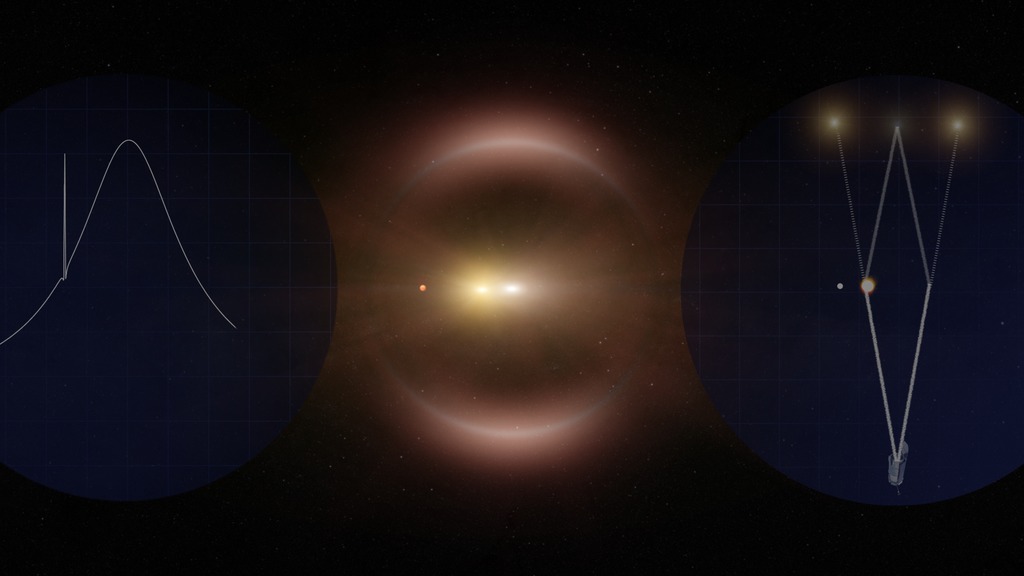
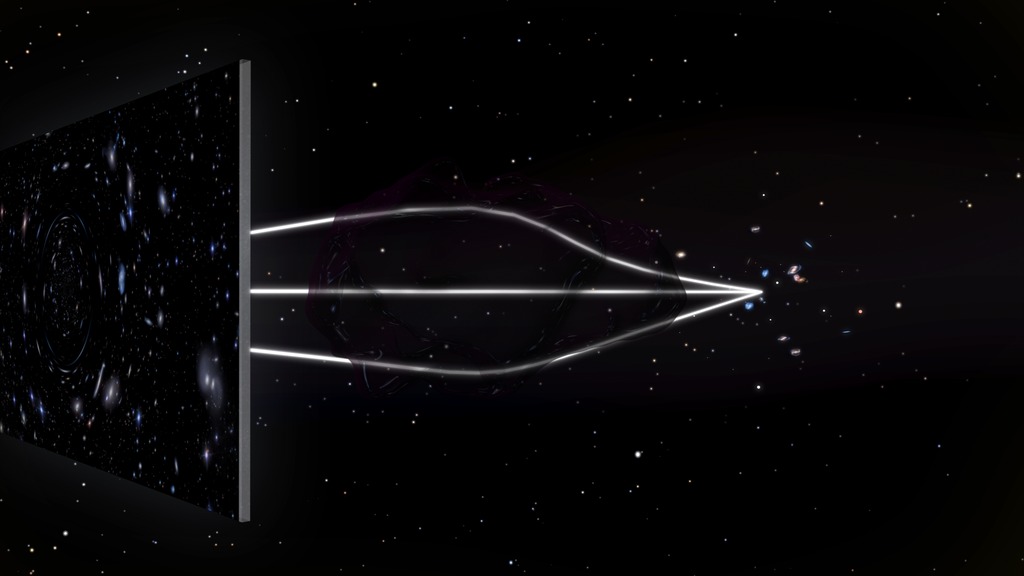
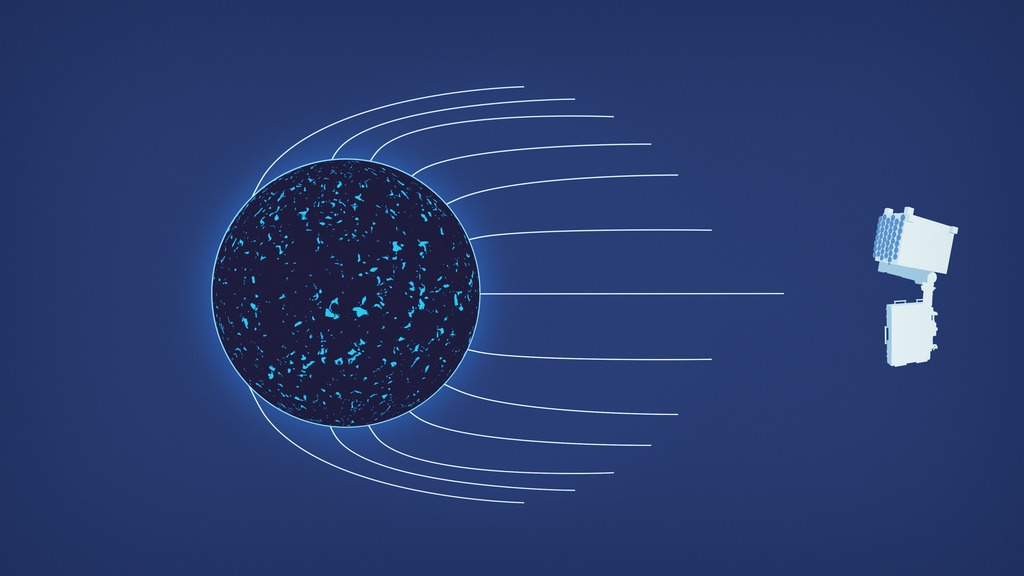
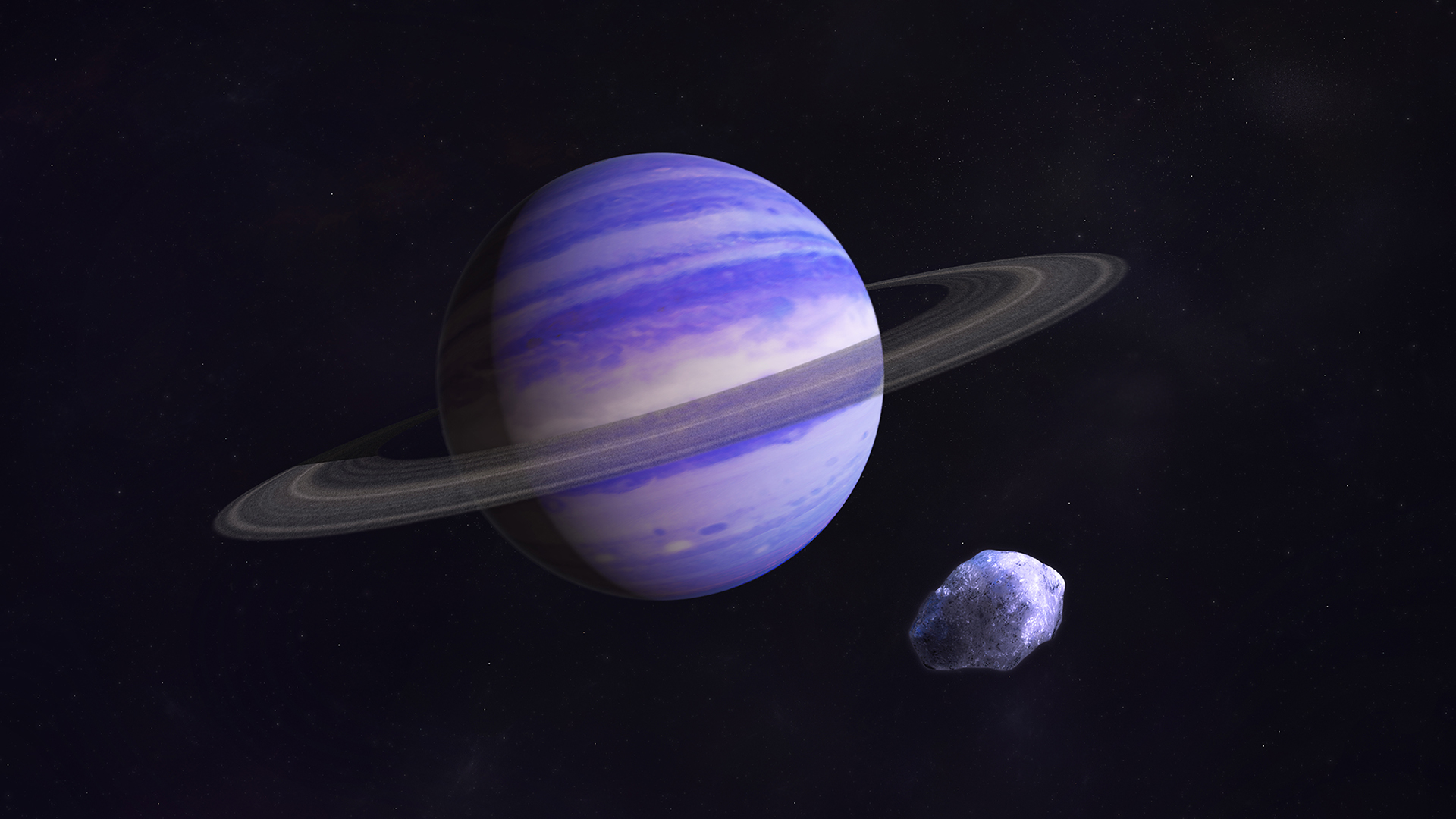
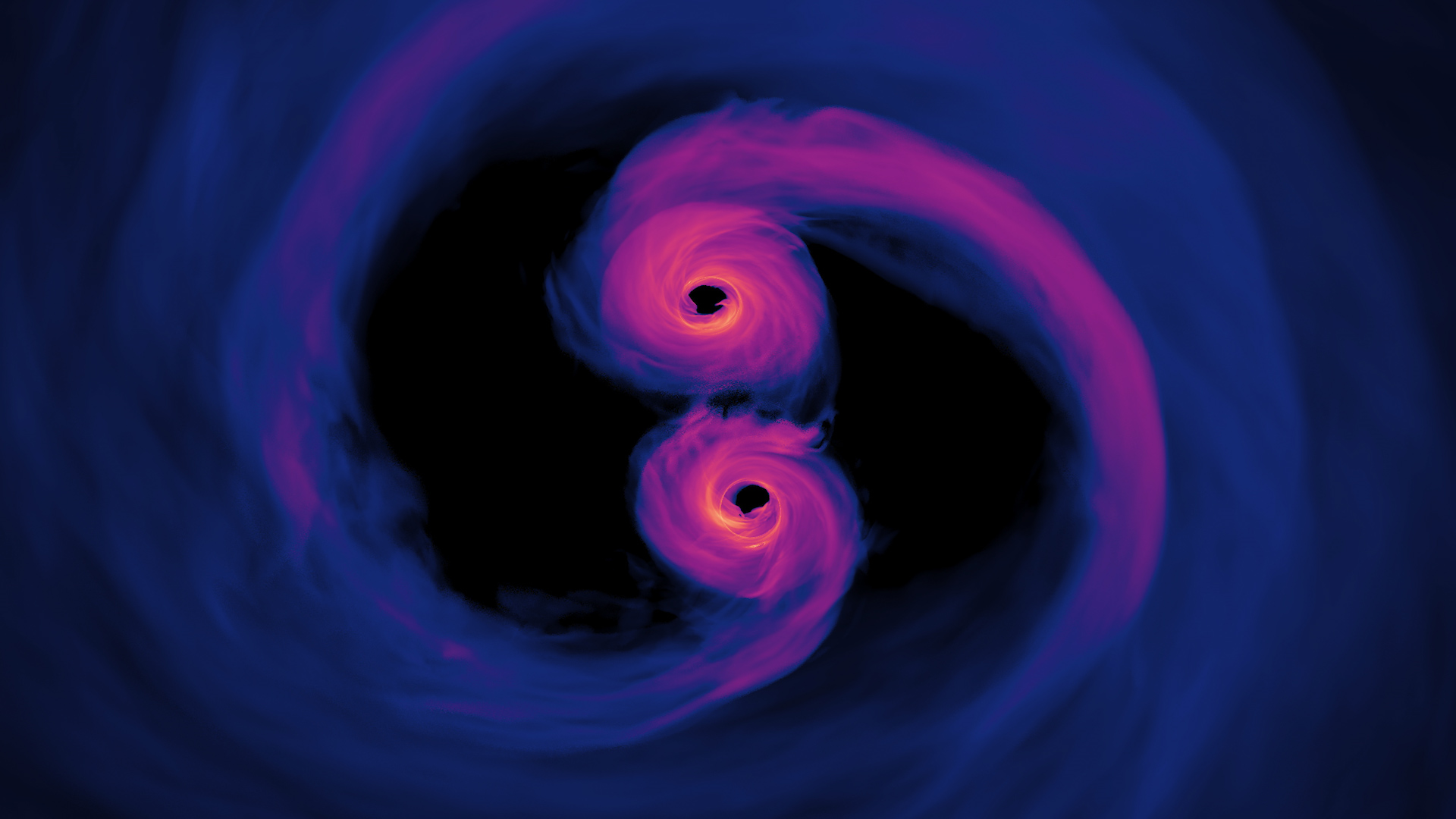
![Music credit: "Stealth Car" by Tom Sue [GEMA] and Zac Singer [GEMA]; Ed. Berlin Production Music/Universal Publishing Production Music GmbH GEMA; Berlin Production Music; Killer Tracks Production MusicWatch this video on the NASA Goddard YouTube channel.](/vis/a010000/a012500/a012539/hubble_rogue_black_hole_thumbnail2.png)


